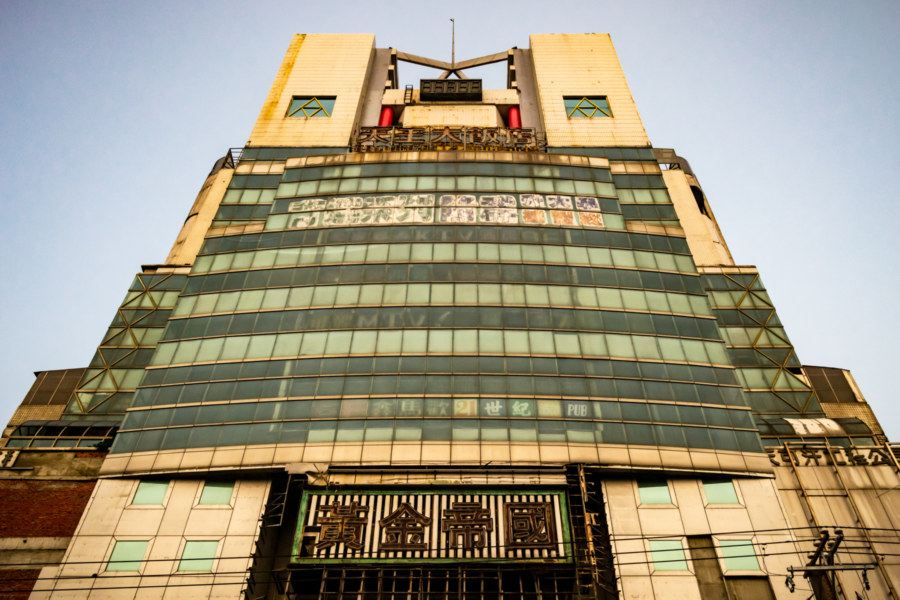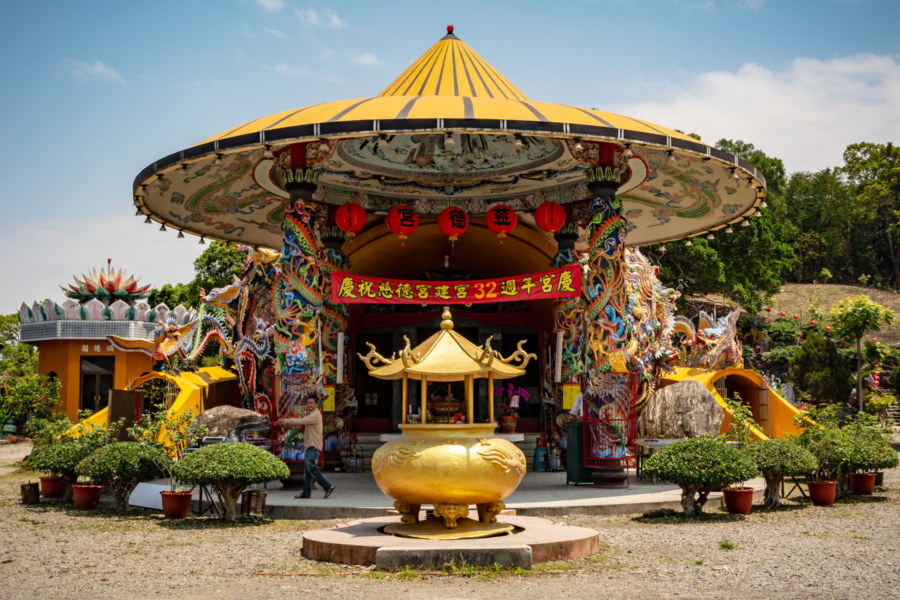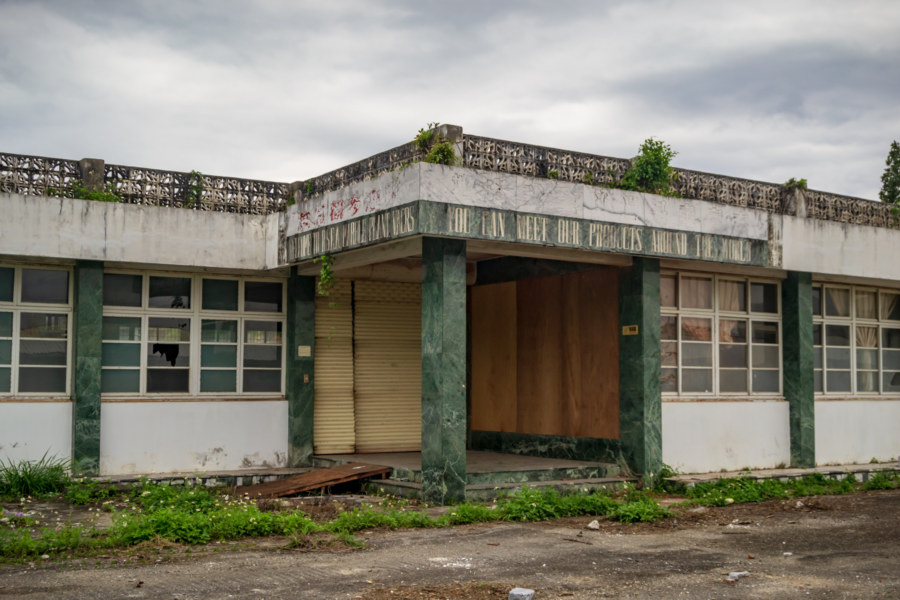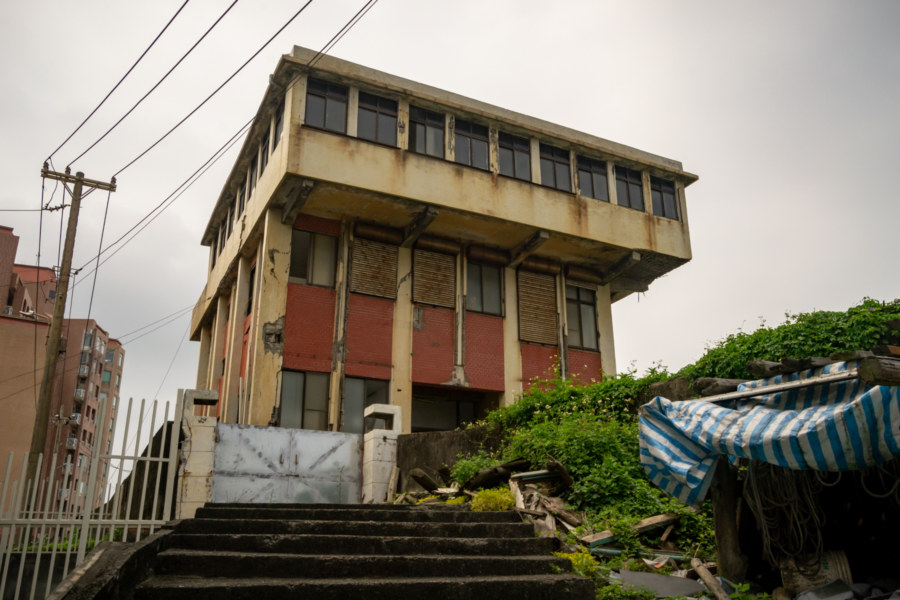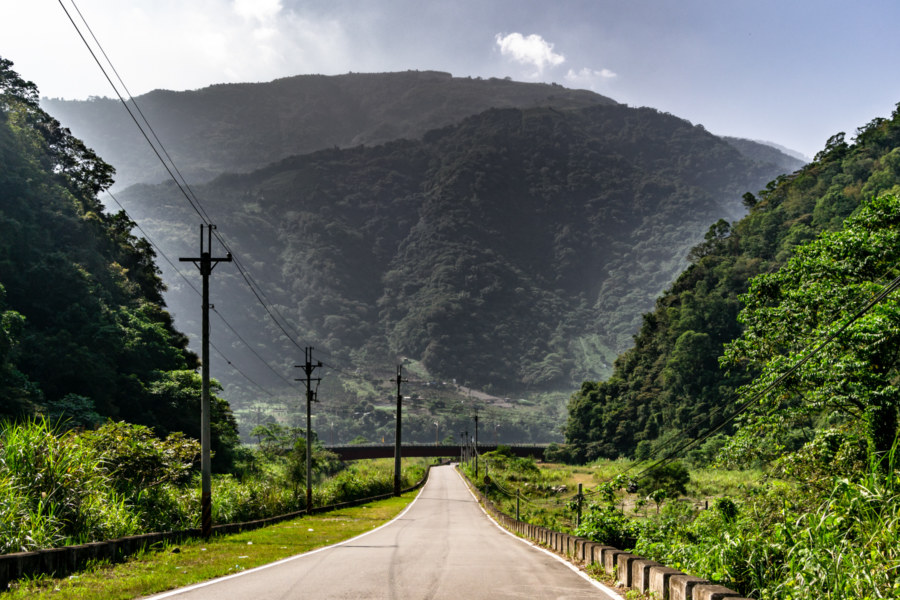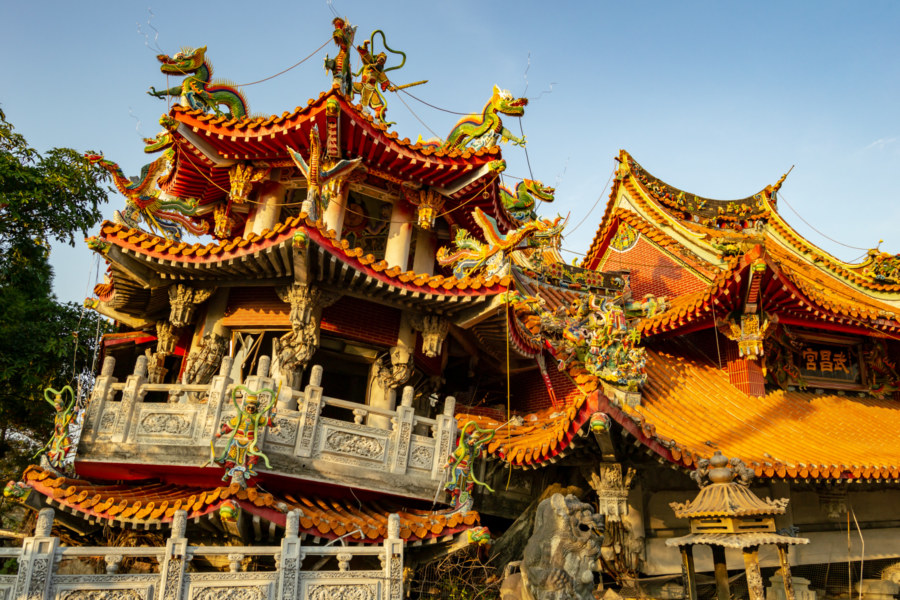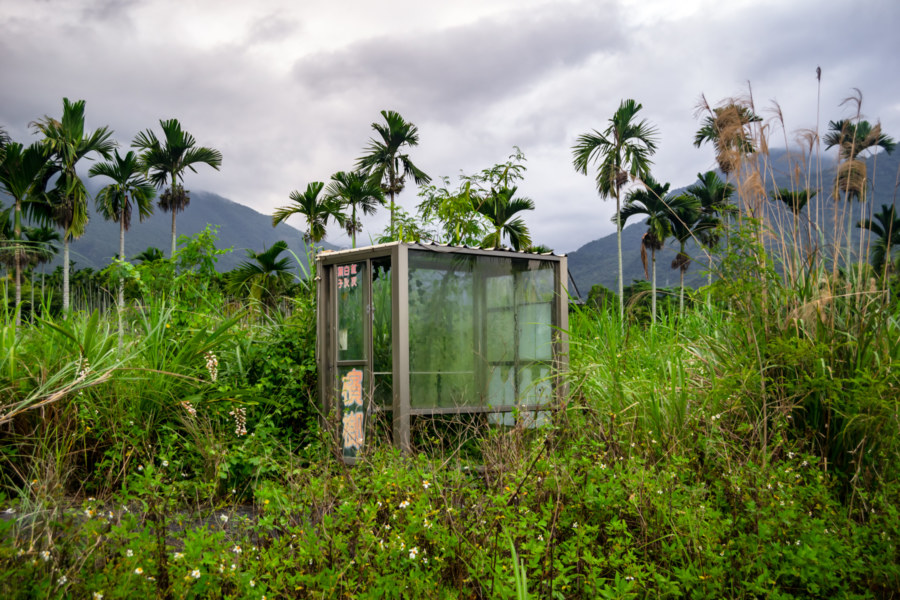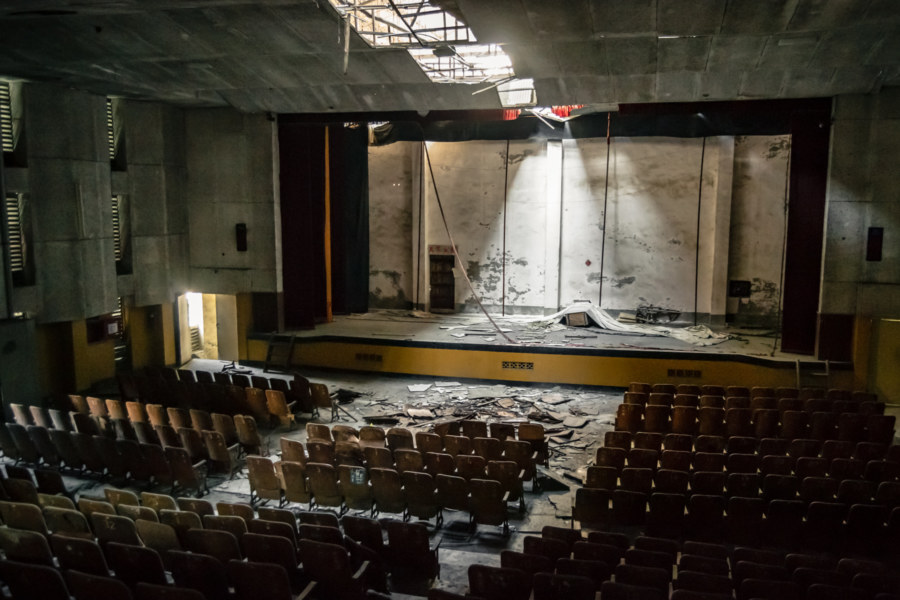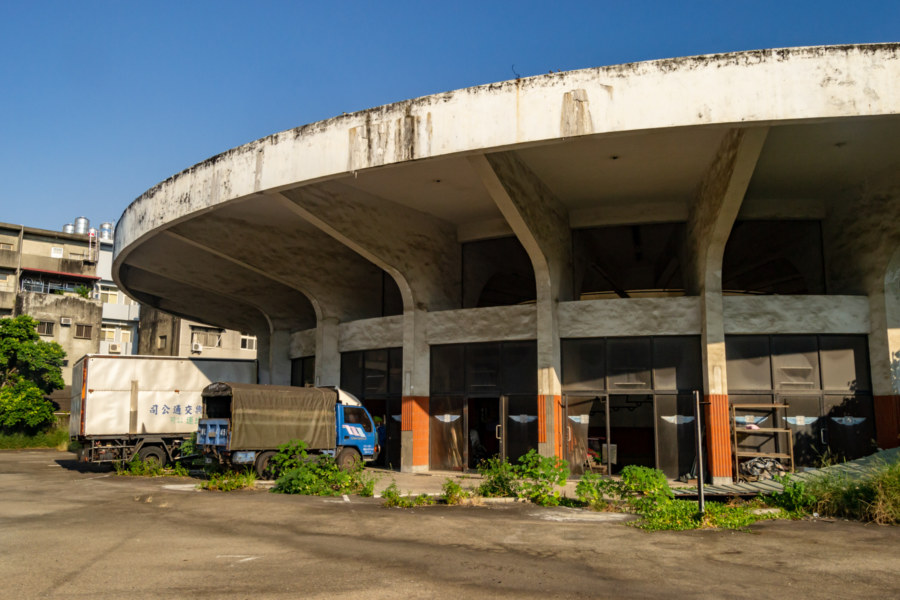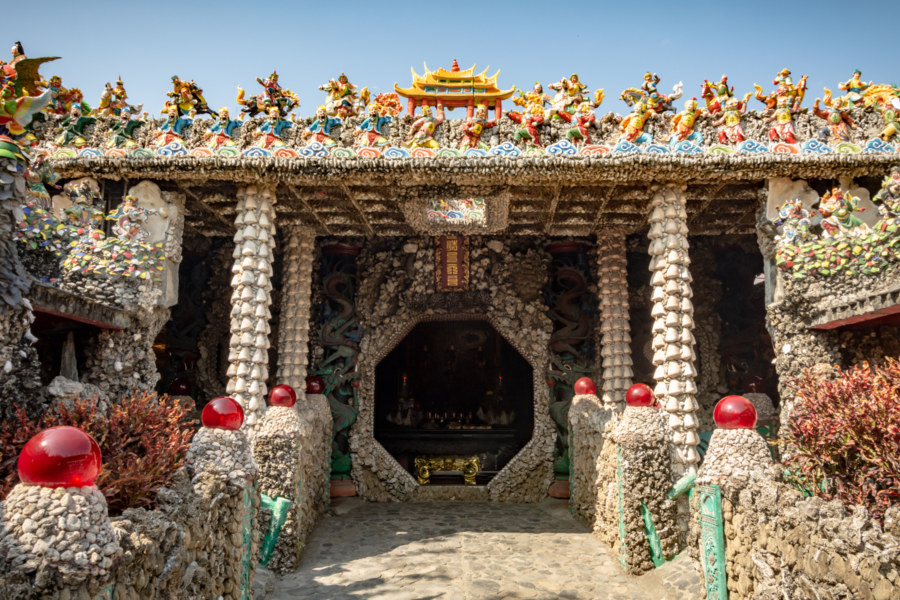Yuanlin is a modest settlement of approximately 125,000 residents located on the Changhua Plain (彰化平原) in eastern Changhua, Taiwan. It was formerly the most populous urban township in the nation, but Yuanlin was upgraded to a county-controlled city in 2015, second only to the administrative capital, Changhua City. Considerable work has been done in recent years to improve the urban environment of Yuanlin, and it feels like one of the few places between Taichung and Tainan that isn’t falling into disrepair and emptying out. That being said, urban decay remains widespread in Yuanlin, and there are many interesting ruins worth exploring before they disappear. For students of city planning and development this compact city also has quite a lot to offer—and in this post I aim to introduce some of its more intriguing features, mainly drawing upon photographs from 2013 to 2015, when I was spending significant amounts of time in the area.
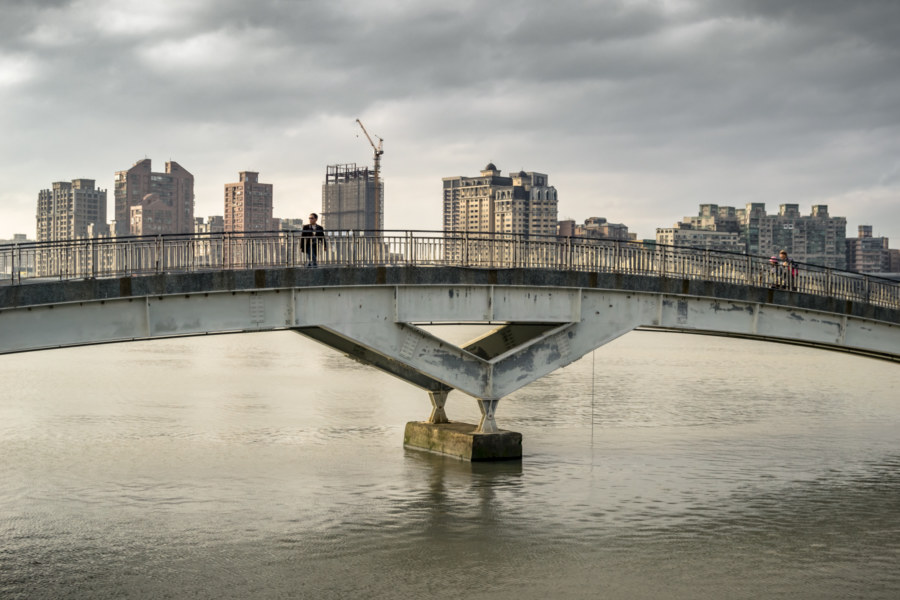
Exploring the urban condition: the buildings that tower over all, the rhythm of the streets, and the fleeting moments of humanity in the midst of the concrete jungle. See also: urbex.
Subterms
Adjacent Terms
Caotun Cide Temple 草屯慈德宮
Cídé Temple 慈德宮 (also romanized as Tzude Temple) is an unusual manifestation of Taiwanese folk religion situated on a hillside overlooking the historic town of Caotun in northwestern Nantou, Taiwan. Constructed in 1984, it was inspired by the recurring dreams of a local fruit farmer, Zhāng Wénqǐ (張文杞), and funded by generous donations from the community. The main hall of the temple takes the form of a bottle gourd (葫蘆) laying on its side, and the entrance is covered by a conical bamboo farmer’s hat (斗笠). These features give the temple its peculiar shape, but they were not chosen at random; the design is inspired by ancient Chinese mythology, albeit with an idiosyncratic twist.
RSEA Marble Factory 榮民大理石工廠
I chanced upon the ruins of the RSEA Marble Factory (榮民大理石工廠) while riding around the industrial park on the north side of Hualien City sometime in early 2017. It wasn’t immediately obvious what this derelict factory produced so I decided to stop and take a closer look. Although much of this sprawling site had already been cleared, a few half-demolished buildings remained. In one of these I found a pallet full of product samples and several references to marble, answering the first of many questions on my mind. But there’s always more to examine if you’re curious, so let’s dig into the archives and see what can be learned about this abandoned industrial site in Hualien, Taiwan.
Yeliu Signal Station 野柳信號臺
Green Bay is a forlorn stretch of sandy coastline in Wanli, a rural district of roughly 22,000 residents situated on the rugged northeastern coast of Taiwan. It is widely known for its many derelict resorts, most famously the so-called Wanli UFO Village (萬里飛碟屋), which is what initially drew me here in 2013. I returned a year later and noticed a dilapidated structure further along the beach, an unsightly institutional building similar in appearance to a Taiwanese police station of the 1980s. A closer inspection revealed an interior cluttered with intriguing artifacts and decaying documents—enough to conclusively identify this neglected ruin. This was formally known as the Yeliu Signal Station (野柳信號臺), an outpost responsible for monitoring maritime traffic in the shipping lanes and designated anchorages just west of the Port of Keelung.
Nantou Road Trip 2015: Sun Moon Lake to Taichung
This post is the final entry in a series documenting several days of riding around Nantou in October 2015. On the last morning of this trip I woke in Puli, close to the geographic center of Taiwan. I only had to return the scooter to the rental shop in Taichung sometime after nightfall so I decided to take a more circuitous route and check out many sights along the way. After a quick breakfast I headed south, briefly stopping by the shores of the majestic Sun Moon Lake (日月潭, covered in the previous entry in this series), and ascended a winding mountain access road leading into Xinyi, one of several majority Taiwanese Indigenous districts in this landlocked county.
Jiji Wuchang Temple 集集武昌宫
Wǔchāng Temple 武昌宮 is one of many remnants of the devastating 921 Earthquake, which ripped through central Taiwan on September 21st, 1999, toppling tens of thousands of buildings and claiming nearly 2,500 lives. Located in the rural township of Jiji in Nantou, less than five kilometers from the epicenter of the magnitude 7 quake, this temple was destroyed mere months after it was completed. Rather than clear the debris, the damaged structure was left more or less as it was the morning after it collapsed, and a new temple with the same name was built in front. Nowadays this ruined temple is a popular roadside attraction and a prime example of disaster tourism in Taiwan.
Huadong Valley Ride 2018: Hualien City to Fenglin
My second day of riding Huādōng Valley (花東縱谷) in 2018 was not everything I hoped it would be. I didn’t manage a proper night’s rest due to a malfunctioning air condition and woke up feeling weak and dehydrated. With temperatures hitting 35°C on the road, and with fewer convenience store stops along the way, it turned out to be the most difficult day of riding on this particular trip back in May 2018. I originally planned to detour into the mountains to visit the village of Tóngmén (銅門) and cruise around Carp Lake (鯉魚潭) on my way south. Instead I elected to head straight down Provincial Highway 9 through Ji’an and Shoufeng into Fenglin to make up for lost time. Although I didn’t see nearly as much as planned I am glad to have an excuse to return to this part of Taiwan.
Guanmiao Zhongyang Theater 關廟中央戲院
Zhōngyāng Theater (中央戲院) is located in Guanmiao, a rural district in southern Tainan home to slightly less than 35,000 residents. The name is derived from a nearby street and simply means Central Theater. It was constructed in 1969, a few short years after an open-air movie theater began showing films on this plot of land just east of the biggest market in town. As with many Taiwanese cinemas of its vintage, it was in business until the late 1980s before winding down, another casualty of changing consumer habits, the collapse of local industry, and rural flight. This year marks the 50th anniversary of Zhongyang Theater, a milestone recently observed by Guanmiao Youth (關廟青), a group of local activists hoping to revitalize their hometown. They were successful in generating some some positive news coverage of the occasion, and now that this theater is in the news, I figure I may as well share my findings from several visits to the site over the last four years.
Changhua Bus Terminal 台汽客運彰化總站
Taiwan Motor Transport Company 台灣汽車客運公司 (or simply Táiqì 台汽) was a state-owned enterprise founded in 1980, partly to take advantage of the newly-completed National Freeway 1 國道一號 running along the western coast of Taiwan from Keelung to Kaohsiung. Considerable investments were made into an extensive fleet of vehicles, more than two dozen bus stations, and a massive maintenance depot (previously documented on this blog). Despite enjoying a monopoly on long distance, intercity coach travel, the company struggled to remain profitable in its first decade of operations—and when the market was deregulated and opened to competition in the early 1990s, its fate was sealed. After incurring another decade of losses Taiqi was privatized in 2001 under the name Kuo-Kuang Motor Transport Company 國光汽車客運股份有限公司, which continues to operate today, albeit on a much smaller scale. One consequence of the downsizing that preceded privatization was the closure of the Changhua Bus Terminal in Changhua City, the administrative capital of Changhua. Today it remains derelict, a crumbling relic of the optimistic 1980s hidden in the laneways north of the central railway station.
Sanqing Sanyuan Temple 三清三元宮
Sānqīng Sānyuán Temple 三清三元宮 is an unusual attraction in Fuxing, immediately to the south of Lukang in Changhua, Taiwan. It was constructed over the course of nearly two decades by Huang Chi-Chun 黃奇春, a former soldier who moved here in the late 1970s. This otherwise modest structure is adorned with thousands of seashells, pieces of coral, and other oceanic oddments—which is why it is more commonly known as the Changhua Shell Temple 彰化貝殼廟.
